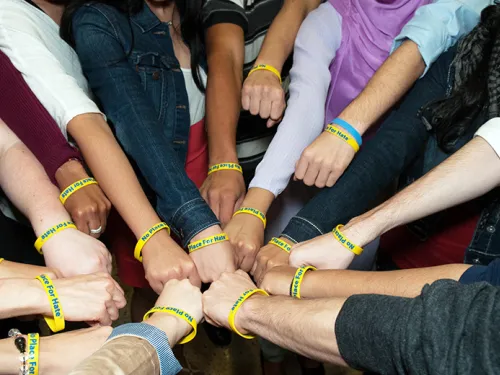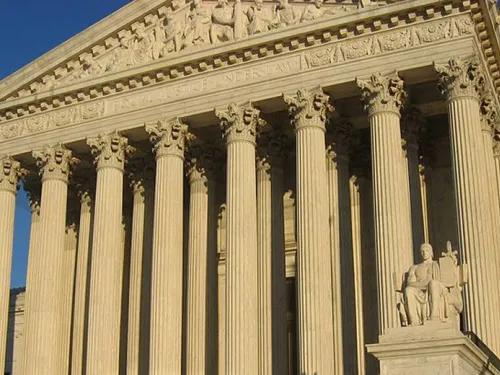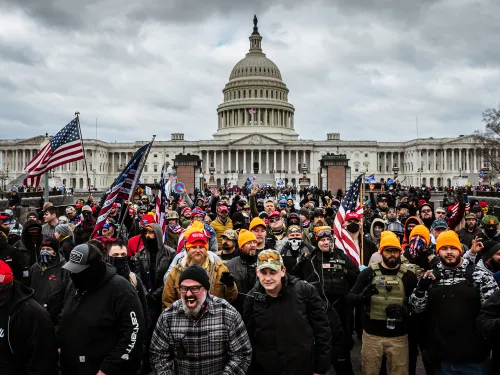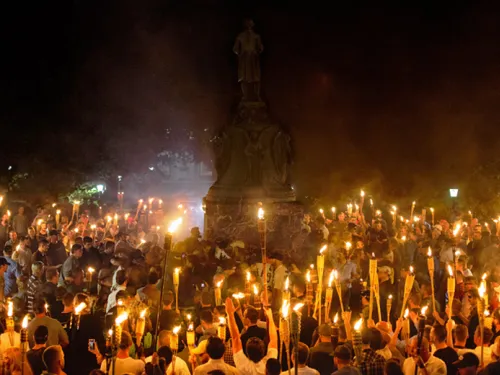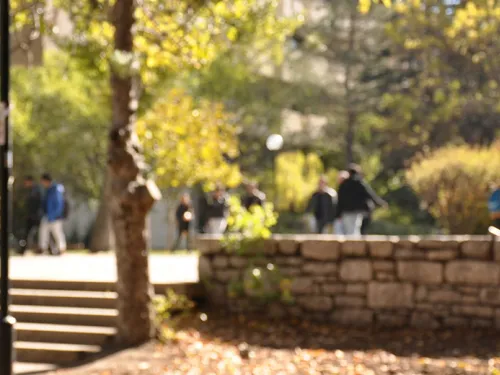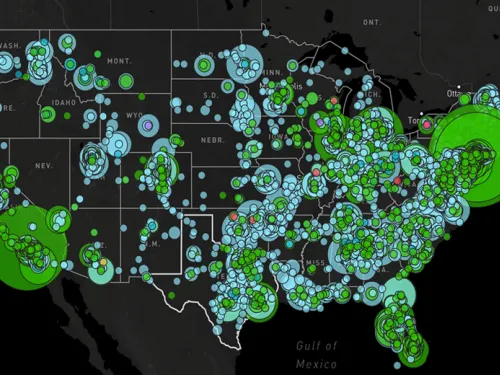June 21, 2013
Read the full report: Extremism in Connecticut (PDF)
Summary
The public often associates extreme anti-government or hate groups with remote, rugged states in the Pacific Northwest or the rural South. Despite these perceptions, extremism in America is spread far and wide. New England is home to its share of extreme groups and movements, just as are the Pacific Northwest and the South.
Connecticut -- despite its small size -- has witnessed some of the most intensive and varied forms of extremist activity. From anti-government "sovereign citizens" and tax protesters to virulent hate groups like the World Church of the Creator and the Klan, extreme ideologies have taken root in Connecticut's soil.
In recent years, Connecticut has experienced a breadth and scope of extremist activity surprising for its size. While some formerly popular extremist groups are now on the decline, others are growing, and are becoming increasingly active and vocal within communities throughout the state. The impact of the Internet and other new media will make Connecticut, like other states, even more vulnerable to new extremist movements that originate elsewhere.
The Ku Klux Klan
Of the different extreme groups or movements that have operated in Connecticut, perhaps the most visible over time has been the Ku Klux Klan.
The Invisible Empire, Knights of the Ku Klux Klan (IE) had the greatest impact. At its peak in the early 1980s, it was the largest Klan group in the country, with the Connecticut unit, one of the most active IE chapters.
1986, in a major departure from Klan tradition, James Farrands, a Connecticut Klan leader, was named Imperial Wizard.. Farrands was not a typical Klan leader; for one thing, whereas the Klan was historically anti-Catholic, Farrands himself was Catholic and openly recruited other Catholics. Farrands maintained other Klan traditions, however, especially regarding confrontations and violence.
The Invisible Empire finally collapsed in the early 1990’s but a new group, the Unified Klan emerge. Connecticut's Unified Klan (UK) conducted itself like the Klan of old.
By 1993, right-wing extremist groups across the country were becoming larger and more militant, in part as a reaction to the controversial standoffs at Ruby Ridge, Idaho, in 1992, and Waco, Texas, in 1993. Connecticut became one of the first states in the country to experience this resurgence in January 1994 that local, state and federal law enforcement agents arrested six members of the Connecticut UK on a variety of conspiracy and weapons charges.
The 1994 arrests caused Klan activity in Connecticut to decline significantly, but it never disappeared entirely. Near the end of the decade, in fact, the Klan showed signs of life once more. Klan activity picked up in 1999 and 2000
It is difficult to estimate accurately the membership of Connecticut Klansmen today. The Klan in Connecticut as elsewhere has suffered from the trend by many would-be members or supporters to move toward more "fashionable" racist groups such as the World Church of the Creator
Yet while their numbers are small, the threat posed by the Klan remains real.
World Church of the Creator (WCOTC)
One of the most publicized white supremacist groups in the United States in recent years has been the World Church of the Creator (WCOTC), led by Matt Hale, the Church's "Pontifex Maximus." Over the years, Church members have also been linked to a number of violent crimes around the country. The WCOTC thus entered the new century with a deserved reputation for hate and violence.
The exact number of WCOTC members in Connecticut is not known, although WCOTC members and publications have claimed at different times several different chapters,
Just as Connecticut Klansmen engaged in illegal acts, members or supporters of the Connecticut WCOTC chapter committed several crimes during the group's brief history in the state.
The most brutal crime to date in Connecticut attributed to a WCOTC member.took place in August 2000, when WCOTC member John Barletta, an inmate, serving a life sentence for murdering his cellmate, brutally attacked and disfigured the warden of the Northern Correctional Institution at Somers, with a knife made out of a razor blade.
Barletta's case illustrates not only the propensity of WCOTC members for violence, but also the attraction that WCOTC has for people who may have a propensity for violence. "Creativity," which bills itself as a "warrior religion" and adopts the slogan "Rahowa" (for "racial holy war"), may easily be used to rationalize violent acts or tendencies.
For the WCOTC, as for many other extremist groups, prisoners may be potential recruits; Iimprisoned WCOTC embers may actively engage in a variety of propagandizing or proselytizing activities. It is through such efforts that prisoners such as Barletta learn about and become attracted to groups like WCOTC. Once a member, he helped form and lead a chapter made up of other inmates.
National Alliance
The National Alliance, an openly revolutionary neo-Nazi organization one of the largest and most well-established of all hate groups has recently established a foothold in Connecticut.National Alliance cells (called "units" or "proto units," depending on their size) are usually better organized and more disciplined than other white supremacist groups.
Connecticut currently has few National Alliance members--only enough to qualify for "proto unit" status, as opposed to full unit status. The creation of a Web page for Connecticut members suggests there may be increased activity in the future.
'Refined' Racism: The Council of Conservative Citizens
Not all hate groups operating in Connecticut are crudely or blatantly racist as the World. Since the 1990s, perhaps the most prominent of these groups has been the Council of Conservative Citizens (CofCC).
The Council co-opts both the language and issues of conservative causes in order to camouflage its true aim, which is to solidify what it believes to be the eroding power base of white Americans
Connecticut is served by the Tri-State Chapter of the CofCC. The majority of the tristate CofCC's membership is from New York and New Jersey, but there is an active contingent of Connecticut members within the organization, and it appears to be growing.
Militia groups and paramilitary organizations
New England states have played a role in the militia movement since its inception. Connecticut itself was a militia trailblazer of sorts for having had one of the earliest groups that could credibly be called a militia. Currently, the state harbors the “51st Militia,” which maintains close ties to the racist and anti-Semitic World Church of the Creator. Connecticut is also home to the Connecticut Survival Alliance (CSA), an online militia think-tank and discussion forum.
Sovereign Citizens in Connecticut
The “sovereign citizen” movement is a network of groups and individuals who have adopted a right wing, essentially anarchist ideology that has its origins in the beliefs of a group called the Posse Comitatus, which first emerged in the 1970s. Often those people who have suffered financial or other personal reverses are most susceptible to the lure of extreme antigovernment ideology. This has proven true for many of Connecticut’s anti- government extremists.
In Connecticut, as in the rest of the nation, bogus liens have been one of the sovereign citizen movement’s most popular harassing tactics for more than two decades. Bogus liens are placed not because there is any money owed, but rather simply as a way of punishing anyone running afoul of a sovereign. The placing of bogus liens became a popular tactic for anti-government activists who wanted to retaliate against law enforcement officials or other authorities.
